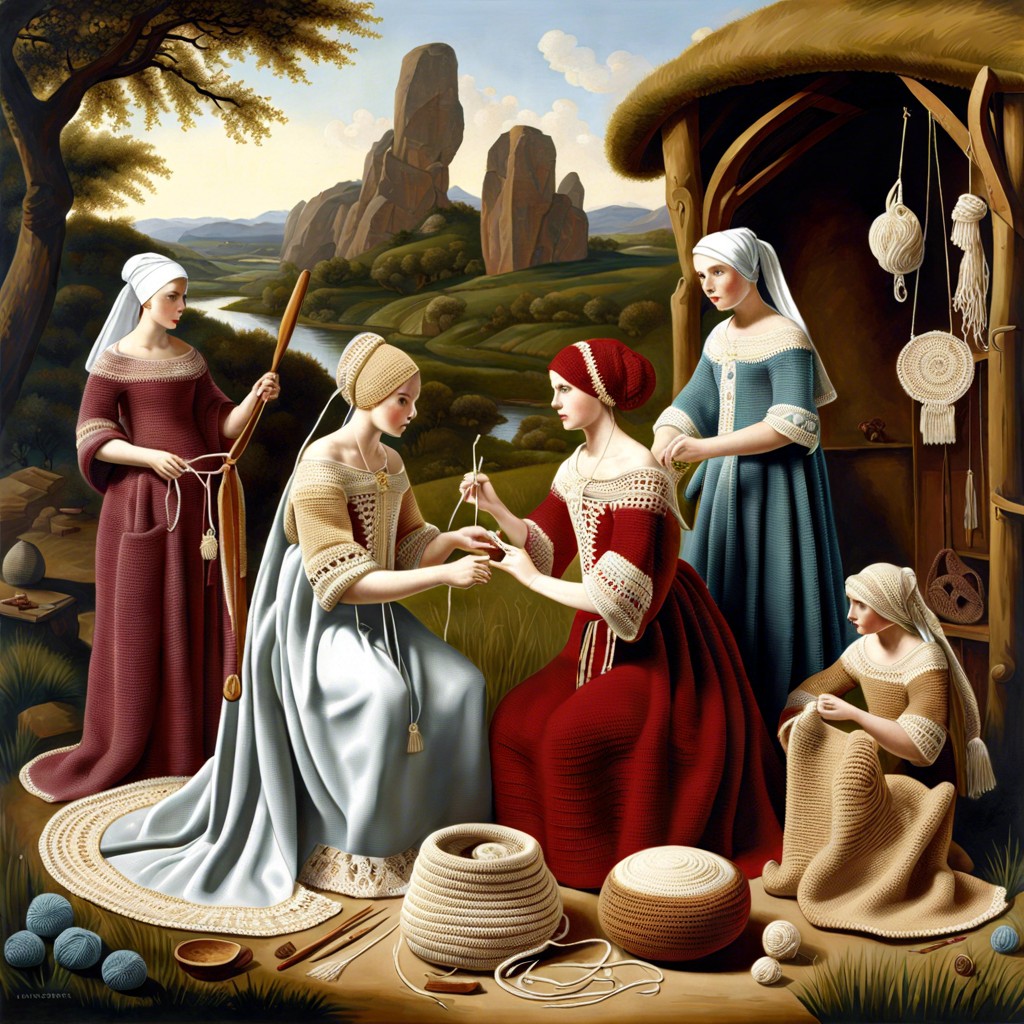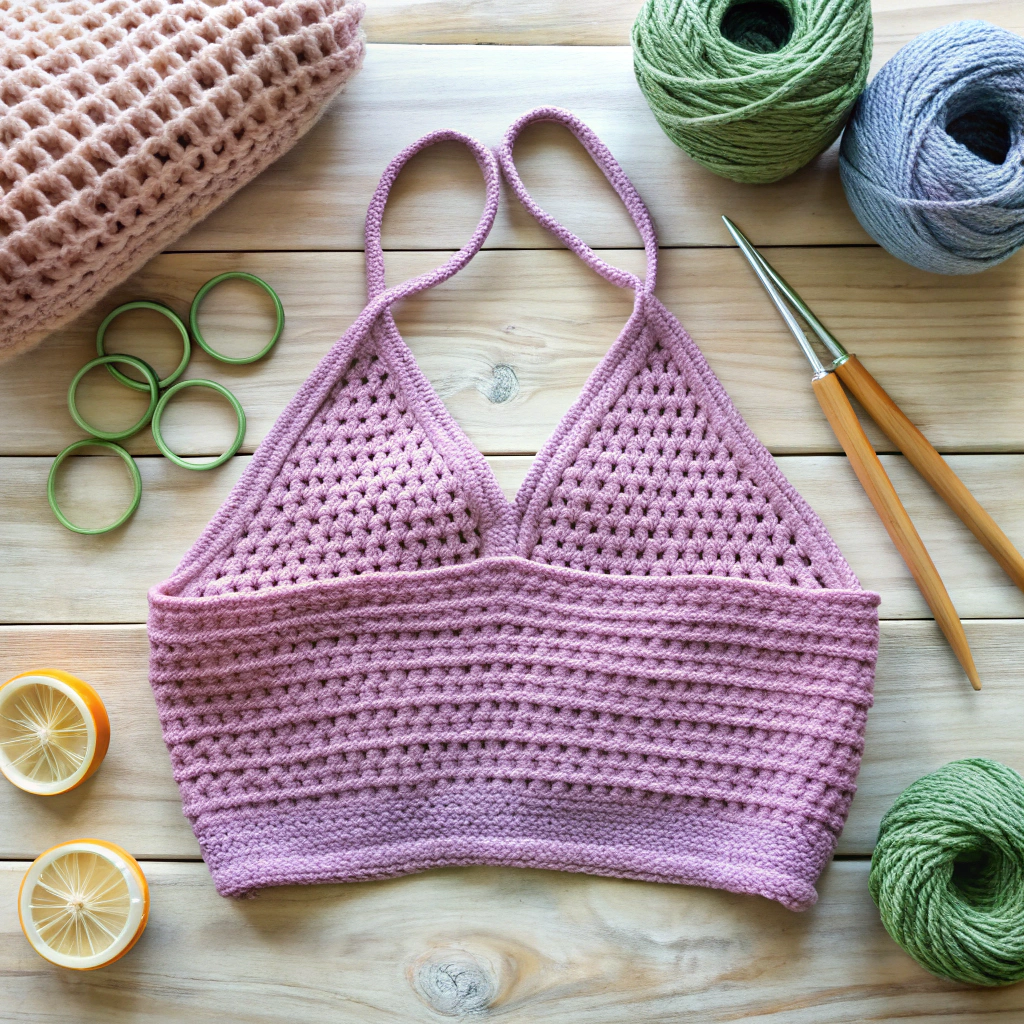Crochet was invented in the early 19th century, and in this article, you’ll uncover its intriguing history and evolution.
Ever wondered who first wielded a crochet hook and conjured intricate loops and patterns? You’re in the right place! From mysterious origins that span continents to a leap forward during the trying times of the Great Irish Famine, crochet’s journey is as colorful as a stash of yarn. Expect tales of decline, resurgence, and even a 21st-century renaissance. Buckle up, history’s about to get cozy!
Key takeaways:
- Crochet’s origins are mysterious, with possible roots in China, Arabia, and Turkey.
- In the 1500s, crochet started to resemble modern techniques and patterns.
- Irish Crochet became popular during the Great Irish Famine in the 1800s.
- Crochet saw a decline in popularity in the 1980s due to changing fashion trends and lifestyles.
- Crochet has made a comeback in the 2020s with bold colors, sustainable materials, amigurumi, and fashion-forward designs.
The Origins Of Crochet
Some believe crochet has mystical roots. Others, just call it tricky. The truth? It’s a bit of a mystery, much like the origins of belly button lint. Here’s what we know:
- The word “crochet” is derived from the French term “croche”, meaning hook.
- Crochet may have originated from early practices in China, known for crafting dolls with basic crochet techniques.
- Tambour embroidery, which uses a thin, hooked needle, thrived in the 1700s and may have morphed into crochet.
Early forms of crochet also appeared in Arabia and Turkey, migrating across Europe at the speed largely dependent on the stubbornness of the camel delivering the message.
What we can figure out, even if we squint really hard, is that crochet’s development involved a combination of diverse practices melding together into the crochet we know today. So, let’s thank the cultural melting pot and possibly a quick little camel.
1500 Age Of Modern Crochet

In the 1500s, crochet started to resemble what we know today. Before that, people might’ve been just twiddling their thumbs and calling it art. Actually, early crochet patterns and techniques from this time were sophisticated. Picture this: intricate lace work, not just your grandma’s doilies.
Patterns began to pop up in written form. Imagine decoding a treasure map, but for yarn. Yet, materials were different back then. They mainly used silk, and hooks were made from anything handy, including bones and ivory.
And guess what? There’s no solid evidence these techniques weren’t around before; they simply became more organized during this era. Crochet magically avoided the 15th-century superstition broomsticks brought with them—so no witch hunts for yarn-lovers.
1800s Irish Crochet
During the 1840s, in the midst of the Great Irish Famine, creative hands turned to crochet as a practical way to support struggling families. Irish Crochet became a vital cottage industry, with women and children producing intricate lacework to sell abroad.
Irish lace was both beautiful and labor-intensive. It featured detailed floral and leaf patterns, often worked as separate motifs and later joined by crochet mesh.
This lace gained popularity in Europe and the United States, fetching higher prices due to its fine craftsmanship. Many could afford a small piece of luxury even in tough times, making it stylish and accessible.
Irish nuns played a significant role in teaching and spreading crochet techniques. They helped establish schools where skills were passed down through generations, ensuring today’s continued appreciation for the intricate beauty of Irish Crochet.
Who knew that crises and crochet could weave such a rich tapestry of history and resilience?
1980s Crochet Popularity Decline
The 1980s saw a dip in crochet’s widespread appeal. Neon leg warmers and shoulder pads took center stage, leaving crochet’s once cozy confines in the shadows.
This decline can be attributed to several reasons:
- The fast-paced fashion world: Trends were changing quicker than you could hook a granny square.
- Yarn quality: Synthetic fibers of the era often lacked the cozy charm of natural fibers, leaving projects feeling less inviting.
- Craft competition: Knitting, needlepoint, and other needlecrafts surged in popularity, elbowing crochet into a smaller niche.
- Changing lifestyles: The 1980s hustle left less time for leisurely crafts like crochet. Busy schedules, work commitments, and a rise in electronic entertainment made it harder to find time to sit and stitch.
Despite this, a dedicated band of die-hard crocheters kept the art from disappearing entirely, paving the way for crochet’s fabulous comeback in later years.
2020s Current Crochet Trends
Big baggy sweaters, intricate doilies, and…dog sweaters? You bet! The roaring 2020s brought crochet back with a stitchy vengeance. Movers and makers everywhere are exploring exciting new trends that are both classic and innovative.
Bright, bold colors are stealing the show, injecting joy into every piece. Think neon pinks and electric blues. Gone are the beige days—your granny would be proud!
Sustainability is the name of the game. Recycled and organic yarns are in high demand, prompting eco-friendly creations with a conscience.
Amigurumi, those adorable crocheted creatures, are not just for kids. Adults are getting in on the action, crafting everything from whimsical unicorns to foxes in bow ties.
Fashion runways are embracing handcrafted flair. From edgy crochet dresses to statement accessories, crochet is no longer confined to the realm of home decor.
Social media has turned influencers into crochet connoisseurs. Hashtags like #CrochetCommunity and #YarnLife bring creators together, spreading inspiration across the globe.
Online tutorials and virtual crochet-alongs make it easier than ever to learn new techniques and connect with fellow enthusiasts. Crochet circles may be virtual now, but the camaraderie is as real as ever.




